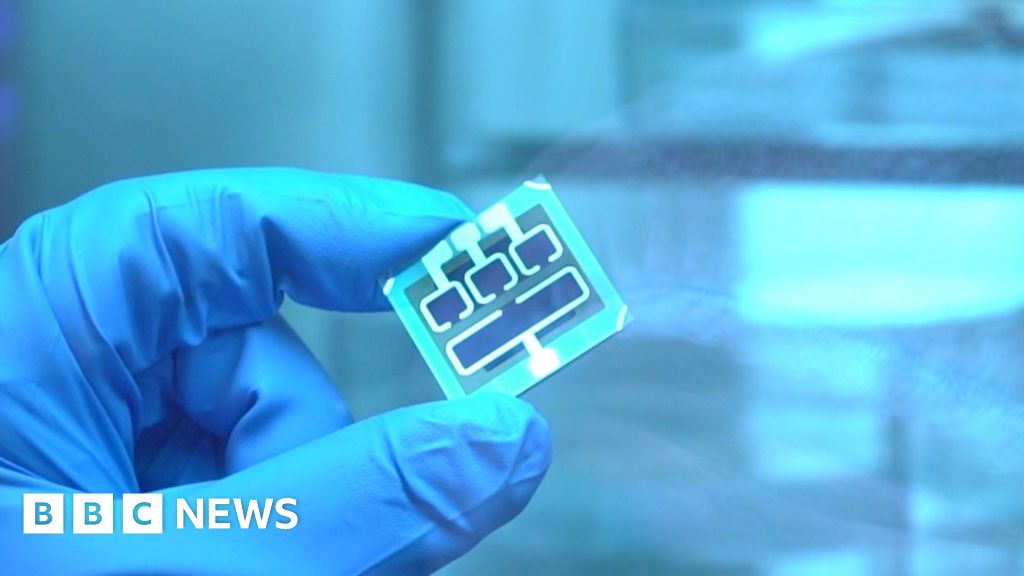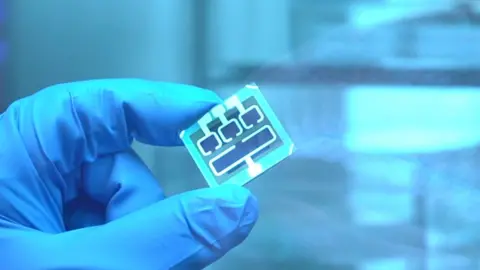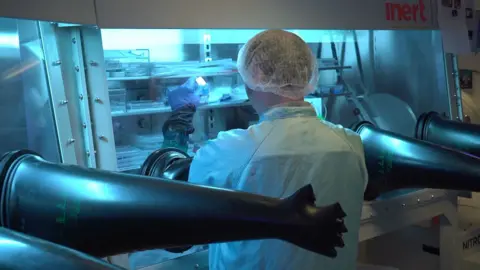
 BBC
BBCPortable solar panels, which could be used on-the-go to charge devices, are being developed by university researchers.
At the National Thin-Film Cluster Facility (NTCF) for Advanced Functional Materials in Oxford, scientists are creating ultra-thin solar panels from perovskites.
According to researchers, perovskite solar panels are cheaper and more effective than those made purely from silicon and can be produced at a smaller size.
Prof Henry Snaith, from the University of Oxford’s physics department, said the new technology will “basically mean you’re going to be able to generate power in more places”.
 Martin Small
Martin SmallTraditionally, solar panels have been made of silicon, but Prof Snaith, who is a professor of renewable energy, said the material had now “reached its performance limit”.
The portable solar panels being developed would be wireless and would stick directly onto devices.
They would then absorb any ambient light and convert it to power – keeping the device charged at a consistent, albeit low level.
“You’ll still need to charge things occasionally, but you can reduce the frequency at which you need to do that, or give yourself some reserve power or some ability to have a very low level of power just from the ambient environment,” Prof Snaith said.
Researchers believe the “revolutionary” technology could be thin and flexible enough to apply to the surface of buildings, cars, or even clothing.
It stacks multiple light-absorbing layers into one solar cell, meaning the perovskites can harness a wider range of the light spectrum – allowing more power to be generated from the same amount of sunlight than a traditional panel.
Ultimately, scientists hope this could reduce the need for specialist solar farms.

Oxford PV, which is a private company spun out of the university research team, has already began marketing its first commercial products using the technology.
“This year is when it actually all starts in terms of the transition from lab to industry,” Prof Snaith said.
He added that his team of researchers would continue to “push” the performance of the materials “much further”.
“Can we make the perovskite useful, for instance, to be on your clothing or backpacks, on building roofs that might need lightweight perovskite?”
